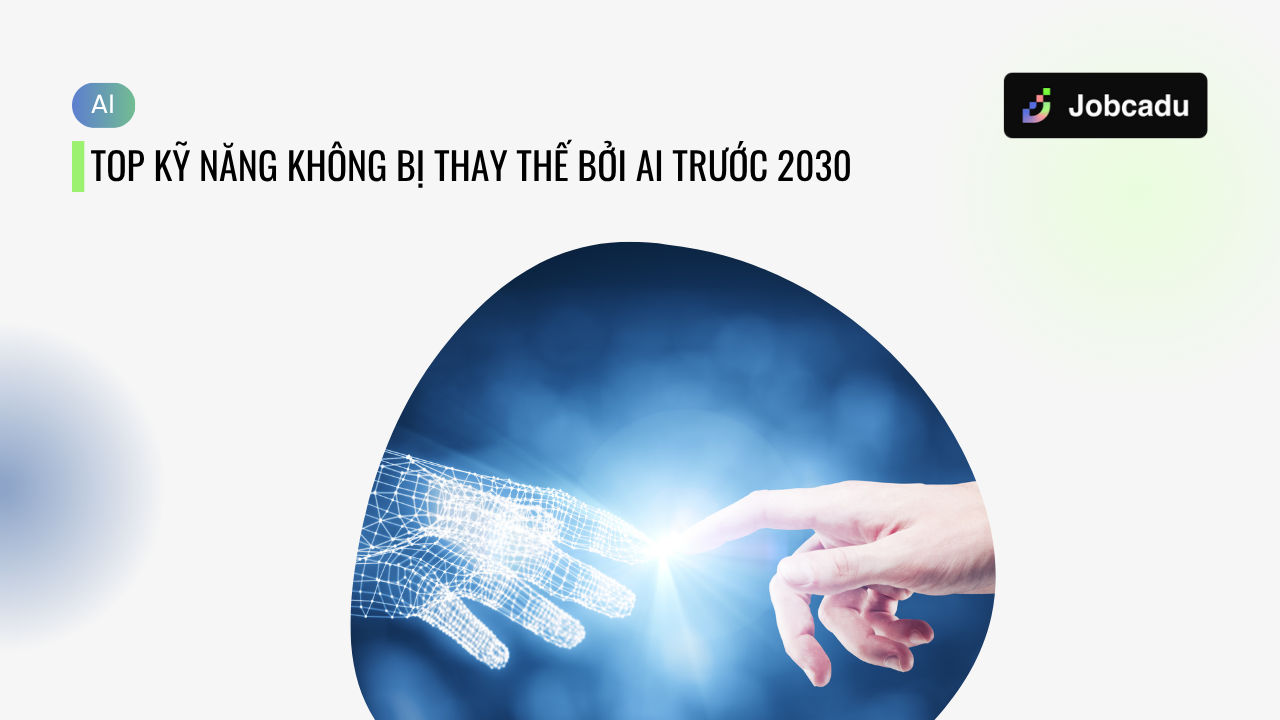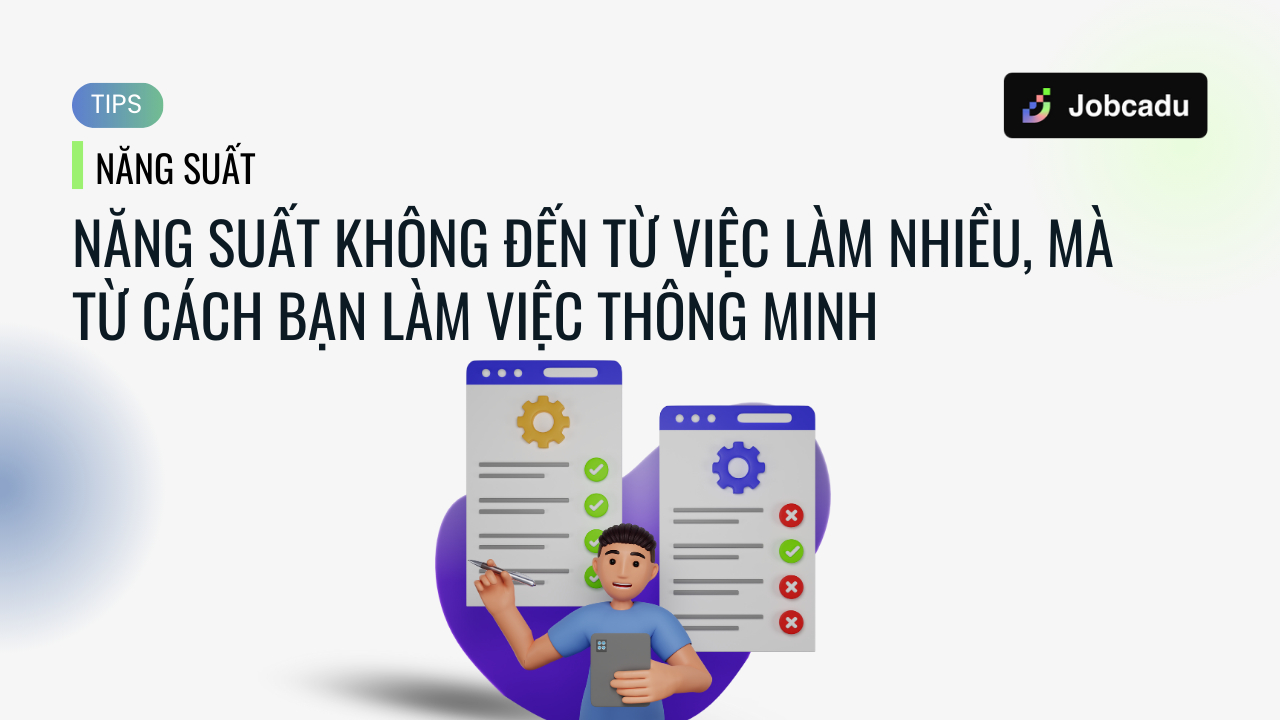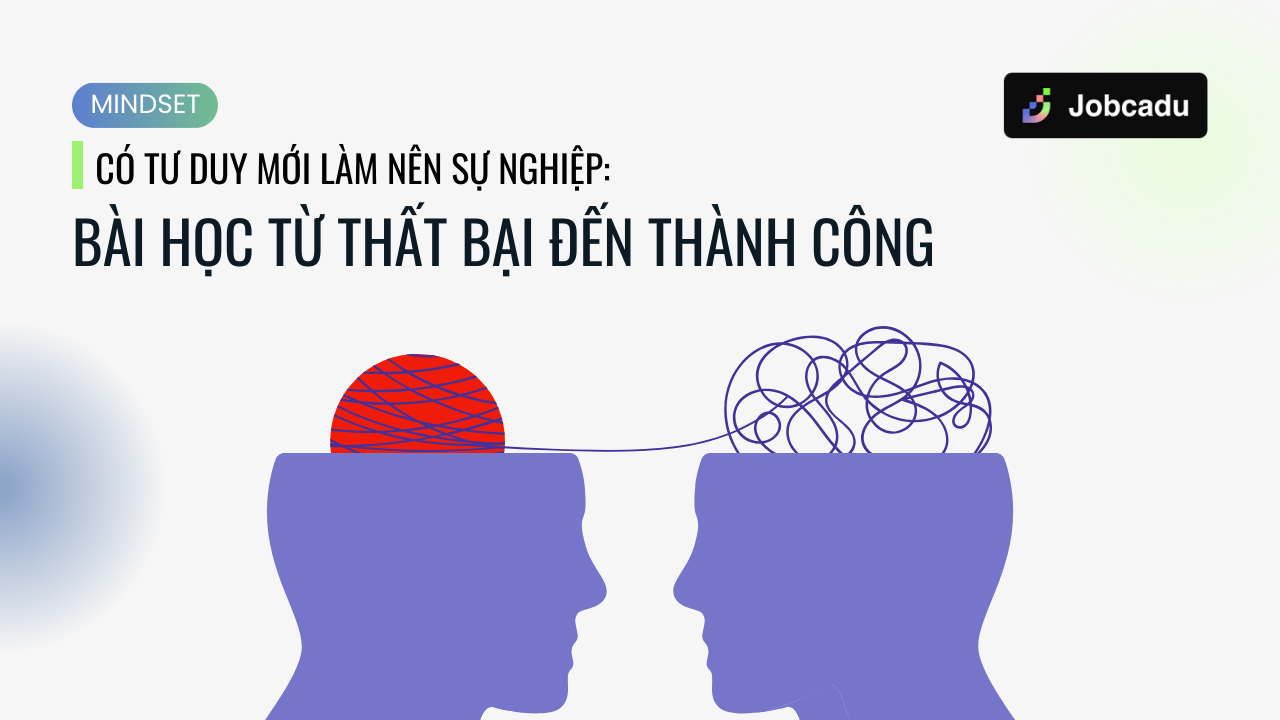
AI Agent คือโปรแกรมซอฟต์แวร์ที่ใช้ปัญญาประดิษฐ์ ทำงานอัตโนมัติโดยไม่ต้องพึ่งพามนุษย์ เพื่อเพิ่มประสิทธิภาพการทำงานในธุรกิจต่างๆ เช่น การบริการลูกค้า การวิเคราะห์ข้อมูล และการตัดสินใจเชิงกลยุทธ์
ไม่กี่วันที่แล้ว Google พึ่งมีข่าวว่าจะตั้งโครงการใหม่ภายใต้ชื่อ Project Jarvis ซึ่งเป็นโปรเจคที่สร้างขึ้นเพื่อ “Automate everyday, Web-based tasks” ซึ่งน่าจะทำงานในเบื้องต้นได้ 3 อย่าง คือ การค้นหาข้อมูลอัจฉริยะ ซื้อของออนไลน์ และจองไฟลท์การบิน ทั้งหมดนี้ด้วย Computer Agent เองภายในเวลาไม่กี่วินาที โดยไม่ต้องผ่านคน - เพื่อเตรียมสู้รบปรบมือกับ Use Case ใหม่ ๆ จากค่ายเจ้าของโมเดล AI ดัง ๆ อย่าง Microsoft, Anthropic และมีข่าวลือว่า OpenAI ก็กำลังจะเตรียมเข้ามาสู้ในสมรภูมิ Layer นี้เช่นกัน
แนวคิดการมี Agent นั้นพัฒนาจากโมเดลที่เรียกว่า LAM หรือ Large Action Model ซึ่งแตกต่างจาก LLM โดยจะเน้นไปที่การเข้าใจกระบวนการ และซับซ้อนมากกว่าการเข้าใจบริบทและสร้างข้อความ
AI Agent คือหนึ่งในเทคโนโลยีบน Application Layer ที่อาจเป็นตัวขับเคลื่อนการเปลี่ยนแปลงนี้ โดย AI Agent คือระบบอัตโนมัติที่สามารถรับรู้สิ่งแวดล้อม ทำการตัดสินใจ และดำเนินการเพื่อให้บรรลุเป้าหมายที่ต้องการ ในบทความนี้ เราจะมาดูกันว่า AI Agent คืออะไร มีประโยชน์อย่างไร และมีแนวโน้มที่จะมาแทน Prompt Engineer หรือ Software-as-a-Service (SaaS) ได้หรือไม่
ก่อนอื่นเรามากลับมาคุยกันเรื่อง AI ในมุมของนักธุรกิจก่อน
"AI คือเทคโนโลยีที่พัฒนาไปเรื่อย ๆ โดยที่คำจำกัดความของ AI เปลี่ยนแปลงไปตามความต้องการและอีโก้ของมนุษย์" Roelof Botha
ผู้บริหารกองทุนที่ Sequoia Capital บริษัทร่วมลงทุนชั้นนำที่ลงทุนใน Google Nvidia และบริษัทชื่อดังอื่น ๆ ตั้งแต่ระยะเริ่มแรก มองว่าความก้าวหน้าใน AI ช่วยให้คนในวงการธุรกิจใช้เทคโนโลยีได้ง่ายขึ้นและเชื่อว่าต้นทุนการประมวลผลที่ลดลงจะทำให้การใช้ AI ในอนาคตอาจมีต้นทุนใกล้ศูนย์
เทคโนโลยีกับการทำธุรกิจ?
เทคโนโลยีที่มอบประโยชน์ให้เจ้าของธุรกิจ ผู้ใช้งานและส่งมอบคุณค่าให้ลูกค้าได้ดีที่สุด มีแนวโน้มที่จะเป็นที่ต้องการ มีมูลค่าและความต้องการที่จะจ่ายที่สูงขึ้น ดังนั้นหากเทคโนโลยีอย่าง AI Agent ที่เป็นเครื่องมือใหม่ชนิดหนึ่ง เสมือนมีเลขามานั่งทำงานบางอย่างแทนเรา เร็วกว่าการเขียน Prompt หรือการใช้ซอฟท์แวร์ที่มี UX/UI ดี ๆ มันก็จะเข้ามาทดแทนเครื่องมือที่ไม่เป็นที่ช้ากว่า ไม่สบายเท่าเหล่านี้ อาจเหมือนที่โทรศัพท์เข้ามาทดแทนโทรเลข รถยนต์เข้ามาแทนรถม้า
AI Agent คืออะไร? การใช้งาน ประโยชน์ และการเปรียบเทียบกับเทคโนโลยีอื่น ๆ
ในยุค AI ที่มีการพัฒนาไปอย่างรวดเร็ว AI Agent กำลังกลายเป็นเครื่องมือสำคัญที่จะช่วยเพิ่มประสิทธิภาพการทำงานและมอบประสบการณ์ที่ตอบโจทย์ผู้ใช้มากขึ้น แต่ AI Agent แตกต่างจาก Automation Tools และ SaaS with AI Integration อย่างไร? บทความนี้จะอธิบายถึงความหมายของ AI Agent ประโยชน์ของการใช้งาน พร้อมตัวอย่าง Use Case และการเปรียบเทียบกับเทคโนโลยีอื่น ๆ เพื่อให้เห็นภาพชัดเจนขึ้น
AI Agent คืออะไร? 🤖
AI Agent คือระบบซอฟต์แวร์ที่มีความสามารถในการรับรู้และประมวลผลข้อมูลจากสิ่งแวดล้อม สามารถตัดสินใจและดำเนินการโดยอัตโนมัติ AI Agent มีความสามารถที่พิเศษในการเรียนรู้และปรับตัวจากข้อมูลใหม่ ๆ ผ่านเทคโนโลยี Machine Learning และ Deep Learning ทำให้ AI Agent สามารถปรับปรุงประสิทธิภาพและปรับเปลี่ยนการตอบสนองให้เหมาะสมกับบริบทได้
AI Agent มีการทำงานใน 3 ขั้นตอนหลัก:
- Perception (การรับรู้): การเก็บและวิเคราะห์ข้อมูลจากสิ่งแวดล้อม เช่น ข้อมูลการใช้งานจากผู้ใช้
- Decision-Making (การตัดสินใจ): การประมวลผลข้อมูลเพื่อเลือกการตอบสนองที่เหมาะสม
- Action Execution (การดำเนินการ): การทำงานตามที่ตัดสินใจ เพื่อให้บรรลุเป้าหมาย
ตัวอย่างการใช้งาน (Use Case) ของ AI Agent 🌟
การใช้งานของ AI Agent ครอบคลุมในหลายอุตสาหกรรม โดยมีการปรับใช้เพื่อเพิ่มประสิทธิภาพและความสะดวกสบายแก่ผู้ใช้ปลายทาง:
1. การบริการลูกค้า (Customer Service)
- AI Agent เช่น Chatbot สามารถตอบคำถามทั่วไปของลูกค้าได้ตลอด 24 ชั่วโมง สามารถป้อนคำสั่งให้ระบบสามารถทำงานต่อโดยไม่ต้องรอเจ้าหน้าที่ ทำให้ธุรกิจสามารถให้บริการลูกค้าได้ทันที เพิ่มประสิทธิภาพและลดค่าใช้จ่ายในการให้บริการ
2. การวิเคราะห์ข้อมูลทางการเงิน (Financial Analysis)
- AI Agent สามารถวิเคราะห์ข้อมูลตลาด คาดการณ์แนวโน้ม และให้คำแนะนำการลงทุนที่แม่นยำมากขึ้น ช่วยให้ผู้ใช้มีข้อมูลสนับสนุนการตัดสินใจในตลาดที่ซับซ้อน
3. การศึกษาและการเรียนรู้ส่วนบุคคล (Personalized Learning)
- AI Agent สามารถสร้างแผนการเรียนรู้ที่เหมาะสมกับผู้เรียนแต่ละคน ช่วยให้ผู้เรียนสามารถเรียนรู้ได้ตรงกับความต้องการและระดับทักษะที่แตกต่างกัน โดยรับข้อมูลจากทักษะ และเนื้อหาบนระบบการเรียนรู้
4. การจองและการซื้อตั๋ว (Booking and Reservations)
- AI Agent สามารถช่วยจองโรงแรม จองไฟลท์ และซื้อตั๋วได้อัตโนมัติในไม่กี่วินาที ช่วยให้ผู้ใช้ประหยัดเวลาและสะดวกสบายมากขึ้น
ประโยชน์ของ AI Agent ต่อ End User 🎯
AI Agent มอบประโยชน์มากมายให้กับผู้ใช้ ไม่ว่าจะเป็นในแง่ของประสิทธิภาพ ความสะดวกสบาย และการปรับเปลี่ยนให้เข้ากับผู้ใช้รายบุคคล:
- เพิ่มประสิทธิภาพการทำงาน โดยช่วยลดภาระงานที่ซ้ำซ้อน ทำให้ผู้ใช้สามารถทำงานที่สำคัญขึ้นได้ เช่น Chatbot ตอบคำถามลูกค้าโดยไม่ต้องรอพนักงาน
- การตัดสินใจที่มีข้อมูลรองรับ AI Agent วิเคราะห์ข้อมูลเพื่อให้คำแนะนำที่เหมาะสมและแม่นยำ เช่น การแนะนำสินค้าที่ตรงกับความต้องการของผู้ใช้
- การปรับแต่งการใช้งานเฉพาะบุคคล AI Agent จดจำการใช้งานและปรับบริการให้เหมาะสมกับผู้ใช้แต่ละคน เช่น แนะนำเนื้อหาที่ตรงกับความสนใจ
- การให้บริการแบบทันทีทันใด AI Agent สามารถทำงานได้ตลอด 24 ชั่วโมง เช่น การจองห้องพักออนไลน์ทันที
เปรียบเทียบ AI Agent กับ Automation Tools และ SaaS with AI Integration ⚖️
เพื่อให้เห็นความแตกต่างของ AI Agent กับเทคโนโลยีอื่น ๆ นี่คือการเปรียบเทียบในแต่ละด้าน:
1. Automation Tools (เช่น RPA - Robotic Process Automation)
- ลักษณะการทำงาน: Automation Tools เช่น RPA ใช้ในการจัดการงานที่เป็นกิจวัตรซ้ำ ๆ โดยการตั้งกฎการทำงานชัดเจน ไม่สามารถปรับตัวหรือตัดสินใจในสถานการณ์ใหม่ ๆ ได้
- Use Case: เหมาะสำหรับงานที่ไม่ซับซ้อน เช่น การคีย์ข้อมูล การจัดการใบเสร็จ
- ข้อดี: ใช้งานง่ายและประหยัดค่าใช้จ่าย
- ข้อจำกัด: ขาดความสามารถในการเรียนรู้และการปรับตัว
2. SaaS with AI Integration
- ลักษณะการทำงาน: SaaS (Software as a Service) with AI Integration คือซอฟต์แวร์ที่มีการฝังฟีเจอร์ AI มาให้ผู้ใช้ใช้งานได้ทันที เช่น การแนะนำสินค้า การวิเคราะห์ข้อมูลเชิงลึก
- Use Case: เหมาะสำหรับระบบที่มีผู้ใช้หลากหลาย เช่น ระบบ CRM ที่ช่วยวิเคราะห์พฤติกรรมลูกค้า
- ข้อดี: มีความยืดหยุ่นและง่ายต่อการใช้งานในระดับองค์กร
- ข้อจำกัด: ฟีเจอร์ AI มักถูกจำกัดในขอบเขตการทำงานของ SaaS เช่นการวิเคราะห์การขาย ซึ่งต่างจาก AI Agent ที่สามารถตอบสนองแบบเรียลไทม์และปรับตัวได้
3. AI Agent
- ลักษณะการทำงาน: AI Agent มีความสามารถในการตัดสินใจและทำงานโดยอัตโนมัติ ทั้งยังสามารถเรียนรู้และปรับปรุงตัวเองได้อย่างต่อเนื่อง
- Use Case: เหมาะสำหรับงานที่ต้องการการตัดสินใจที่ซับซ้อน เช่น การวิเคราะห์การลงทุน การบริการลูกค้า 24 ชั่วโมง
- ข้อดี: มีความสามารถในการปรับตัวสูง เรียนรู้ได้จากข้อมูลใหม่ และให้บริการเฉพาะบุคคลได้
- ข้อจำกัด: ต้องการการพัฒนาทางเทคโนโลยีและทรัพยากรสูงกว่าระบบอื่น ๆ
นักออกแบบผลิตภัณฑ์ วิศกรซอฟท์แวร์จะสามารถสร้างให้ง่ายต่อผู้ใช้งาน ขณะที่ต้นทุนในการประมวลผลจะต่ำลงทำให้ ฟีเจอร์เหล่านี้เป็นไปได้ในมุมมองนักธุรกิจในอนาคตอันใกล้
ศักยภาพในการทำงานร่วมกัน
แม้ AI Agent อาจไม่สามารถแทนที่ Prompt Engineering ได้ แต่สามารถช่วยให้การทำ Prompt Engineering มีประสิทธิภาพยิ่งขึ้นในอนาคต
Prediction : ในอนาคต AI Agent จะมี baseline ในการให้บริการลูกค้า ขณะที่การเขียน Prompt เพื่อ Customize ความต้องการจะเป็นส่วนขยายของผลิตภัณฑ์ต่าง ๆ เหมือนการตั้งค่าเสียงนาฬิกาปลุกในโทรศัพท์
อนาคตของ AI Agent และตำแหน่งงานที่อาจเกิดขึ้น
จากความต้องการและความน่าดึงดูดในการใช้ AI Agent เพื่อสร้างประสบการณ์ของลูกค้าอย่างล้ำสมัย คาดการณ์ว่าตำแหน่งงานเหล่านี้จะเกิดขึ้นเพื่อพัฒนา AI Agent ต่อไป
AI Trainer
Role: ฝึกฝนและปรับแต่ง AI agents สำหรับงานเฉพาะโดยใช้ข้อมูลที่มีการติดป้ายกำกับ (labeled data) เพื่อกำหนดพฤติกรรมและปรับพารามิเตอร์
Skills: การทำหมายเหตุข้อมูล (data annotation), ความรู้พื้นฐานด้าน Machine Learning, ความรู้เฉพาะด้าน (domain-specific knowledge)
AI Ethics Specialist
Role: ดูแลให้ AI agents ทำงานอย่างมีจริยธรรมและรับผิดชอบ โดยจัดการกับปัญหาต่าง ๆ เช่น อคติ ความเป็นธรรม และความโปร่งใส
Skills: ความรู้ในกรอบจริยธรรม (ethical frameworks), กฎหมายความเป็นส่วนตัวของข้อมูล (data privacy laws), การวางนโยบาย (policy-making)
Prompt Engineer
Role: ออกแบบและปรับแต่ง prompt เพื่อให้ได้คำตอบที่ต้องการจาก AI language models หรือ conversational agents
Skills: ความคิดสร้างสรรค์ (creativity), การประมวลผลภาษาธรรมชาติ (language processing), และความเข้าใจในพฤติกรรมของโมเดล AI
AI Compliance Officer
Role: ควบคุมการปฏิบัติตามข้อกำหนดด้าน AI ให้มั่นใจว่าการทำงานเป็นไปตามกฎหมายและมาตรฐาน
Skills: ความรู้ด้านกฎระเบียบ (regulatory knowledge), การประเมินความเสี่ยง (risk assessment), การจัดการการปฏิบัติตามข้อกำหนด (compliance management)
Human-AI Interaction Designer
Role: สร้างการปฏิสัมพันธ์ที่ราบรื่นระหว่างมนุษย์และ AI agents โดยเน้นที่ประสบการณ์ของผู้ใช้และการตอบสนองของเอเจนต์
Skills: การออกแบบ UX/UI, จิตวิทยา (psychology), การออกแบบการสื่อสาร (communication design)
ความท้าทายและอนาคตของ AI Agent
การพัฒนา AI Agent ไม่เพียงช่วยเพิ่มประสิทธิภาพการทำงาน แต่ยังช่วยให้ธุรกิจสามารถรองรับการเปลี่ยนแปลงในยุคดิจิทัลได้ อย่างไรก็ตาม ยังมีความท้าทายบางประการในการใช้ AI Agent เช่น การประมวลผลข้อมูลที่ซับซ้อน การจัดการความเป็นส่วนตัว และความปลอดภัยของข้อมูล
ในอนาคต AI Agent อาจจะมีบทบาทในการแทนที่บางส่วนของ Prompt Engineering หรือการตั้งค่าระบบ AI ใน Large Language Models (LLM) หรือแม้กระทั่งการเปลี่ยนแปลงการทำงานในแอปพลิเคชันดั้งเดิม AI Agent อาจเข้ามาเป็นผู้ช่วยที่อัจฉริยะและมีความยืดหยุ่นในการให้บริการลูกค้าในทุก ๆ ด้าน
สรุป
- AI Agent เป็นเทคโนโลยีที่มีศักยภาพสูงในการเปลี่ยนแปลงวิธีการทำงาน เพิ่มประสิทธิภาพ และช่วยให้ธุรกิจสามารถปรับตัวให้เข้ากับความต้องการของลูกค้าได้ดียิ่งขึ้น ขณะที่ Automation Tools และ SaaS with AI Integration ก็มีบทบาทสำคัญเช่นกัน การเลือกใช้เทคโนโลยีที่เหมาะสมจะขึ้นอยู่กับลักษณะของงานและความต้องการของผู้ใช้ หากคุณต้องการเทคโนโลยีที่สามารถปรับตัวเองได้และให้บริการได้ในแบบที่เหมาะสม AI Agent คือทางเลือกที่เหมาะสม












